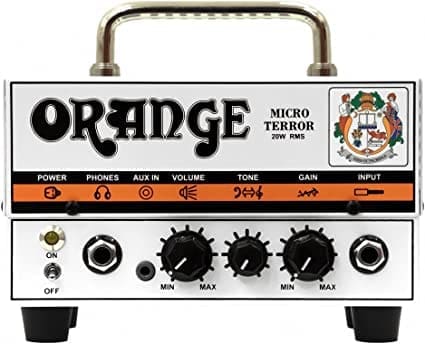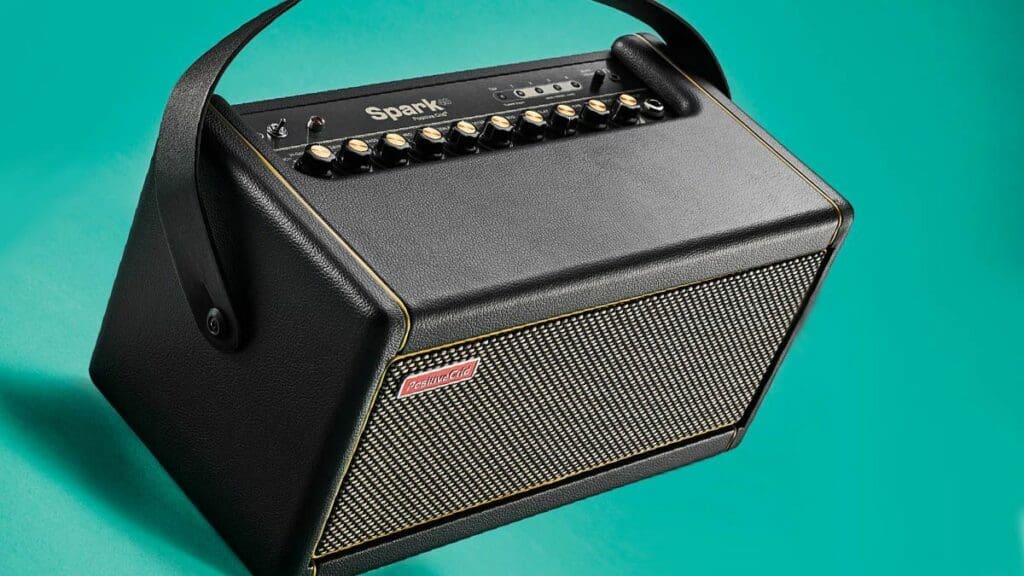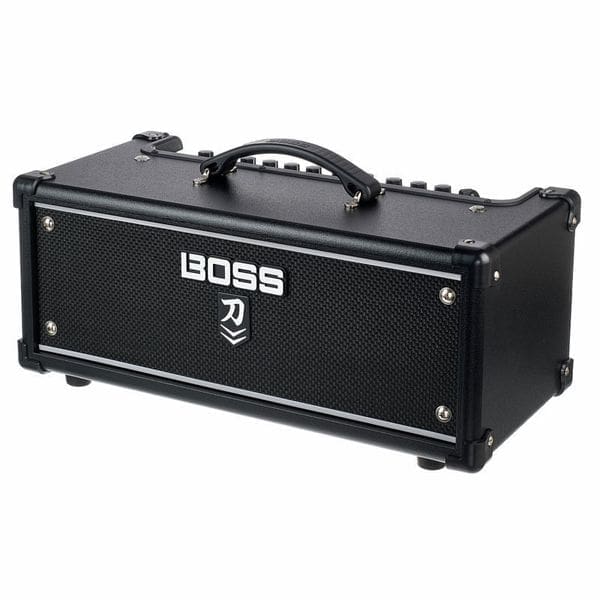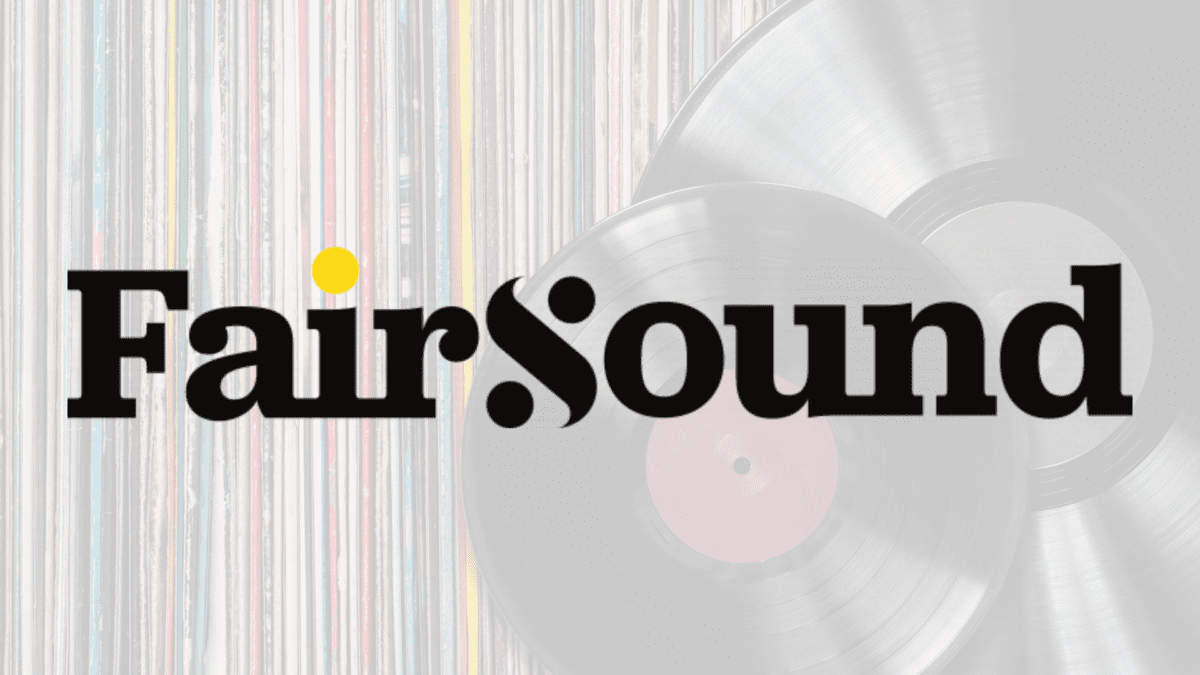Presumably, you are reading this because you want to invest in a decent guitar amp, and have realised that there are a ton of options. That’s where we come in! We’re here to narrow down the best guitar amplifiers you can find. In this article, we will look at different types of amps, share our recommendations and discuss features and pricing.
What Is A Guitar Amp?
A guitar amp is an electronic device that amplifies sounds made from the best electric guitar amp, the best acoustic guitar amp or bass guitar. Amplifiers can also modify the instrument’s tone by emphasising or de-emphasising certain frequencies, using equaliser controls and adding electronic effects such as distortion. Amps can be used at home, for recording, and when performing at gigs, although some are more suited to different uses.
So, what are the best home practice amps and best gigging amps available? Firstly, let’s cut that pile in half and decide what type of amp best suits your needs and the kind of music you want to play. Guitar amps typically can be divided into two camps, valve and solid state. Let’s look at what those terms mean.
Valve Amps – Best Guitar Amps
Also known as tube amps, if you are on the other side of the Atlantic. These are the ‘original’ way of building amps and are so named because they use valves to increase the power of the signal received from the guitar. As with all the old ways of doing things (vinyl, classic cars, writing letters etc.), they are revered as having more character and being of higher quality than modern amps.
This is largely due to the way that the valves ‘colour’ the signal as they amplify it. Changing the valves on your amp can have as big an effect on your sound as changing the pickups on the guitar, or the fingers you play with. Valves also respond differently depending on how strong the signal is that is sent to them. This means that valve amps feel like they ‘respond’ to the intensity and dynamics of your playing.
Another interesting effect of using older technology is that valves change and degrade over time. This means that the sound you get is never the same from one day to the next. With valve amps, you’ll immediately notice a jump in the price. This is down to a combination of the parts being more expensive, the construction being more labour-intensive, and the fact that those looking for valve amps will pay more for the tone they want.
That being said, you can still get some relative bargains. If you want to gig with a valve amp, it’s worth considering a second low-wattage valve practice amp. That way, you can practice manipulating the tonal response options that valve amps can give you without having to soundproof your house.
Solid State Amps – Best Guitar Amps
Solid-state amps use transistors to do the job that valves used to do. They are more stable, require less energy, and sound the same from day to day. Lovers of solid-state amps are fond of the fact that their tone isn’t coloured by valves, meaning they produce an identical tone at low and high volumes.
The fact that there are no fragile valves to replace means they are more reliable. In fact, most valve-loving musicians have a secret backup solid-state amp in case of pre-gig emergencies. They are also perfect for mixing with modern modelling technology that allows players to digitally emulate almost any amp tone imaginably.
We’re going to take a look at the best practice amps, followed by the best gigging and recording amps.
Best Solid State Practice Amps
So, now you might be wondering ‘What is the best practice amp for guitar in relation to Solid State amps?’ We’ve got you covered, keep reading to find out!
Fender Frontman 15r – Best Guitar Amps

If you are looking for the best amp for home use, the Fender Frontman 15r has never been beaten. For a home practice amp, this thing packs an amazing punch, with a clean sound and a decently built-in overdrive channel. It can easily reach volumes that will exceed what you need for home practice. With a microphone, you might even find yourself wanting to play your first gigs with it.
It also has a line in for audio, so you can play backing tracks or drum machines through it along with your guitar. As an added bonus, Fender included a high-quality, real spring reverb that responds to your playing. This is truly a rare feature in an amp of this size. They have been discontinued by Fender, but you can pick one up online in decent condition for around £30, making it the best second-hand practice amp you can find for the money.
Features
- Lightweight and compact amp
- Real spring reverb
- Bass, treble, mid controls
- Built-in overdrive with a separate volume channel
- Line in for a variety of audio devices
- Amazing quality for the price
Roland Microcube – Best Guitar Amps

If you are more interested in special features, the Roland Micro cube is another fantastic amp. Whilst the clean sounds and reverb aren’t quite up to the standard of the Frontman, the Microcube has the advantage of having a range of built-in effects. These are so much fun, you will find it hard to put your guitar down. This is one of the best home practice amps going if you are into music that experiments with delays, tremolos and other interesting textures.
The Microcube is also a favourite of buskers for its ability to make 6 AA batteries last an eternity, so it can practically pay for itself. It is also one of the best small guitar amps out there! You’ll pay £100 to £200 for a brand new one, or anywhere from £50 to £150 on eBay for one of these. Bear in mind that you’ll never want to part with the best mini guitar amp once you’ve got it!
Features
- Lightweight and compact amp
- Several adjustable effects
- Bass, treble and mid controls
- Several different distortions
- Line in for backing tracks and drum machines
- Mains or battery-powered
Best Valve Practice Amps
Wondering ‘What is the best guitar practice amp for home use?’ Let’s take a look at our picks for the top valve options.
Vox AC4TV

The Vox AC4TV is something special. Long regarded as the pinnacle of valve amp makers, Vox has been making great efforts to make the sound made famous by The Beatles, Brian May, Hank Marvin, The Edge and several others available to everyone. To buy one new will set you back around £300, and second-hand, they come in at around £150.
So, what do you get for your money? You get a tiny amp capable of crystal clear clean tones, gritty overdrive, and serious volume. You also get to have the coveted Vox logo in your practice room! This amp will allow you to swap between 4 watts, 1 watt and ¼ watt power.
This means you can get the sound of fully cranked valves at bedroom volumes, and you would be surprised at how loud that 4-watt setting can go! The AC4TV doesn’t come with any of the bells and whistles of amps like the Roland Cube, or the reverb of the Frontman. What it does is what all the best Vox amps do – one thing, mesmerizingly well. If what you want is a stage-standard tone in your bedroom, this is the best home practice amp for you.
Features
- Multiple power settings
- Amazing sound
- Surprisingly versatile tonal options from just bass and treble control
Bugera V5 Infinium – Best Guitar Amps
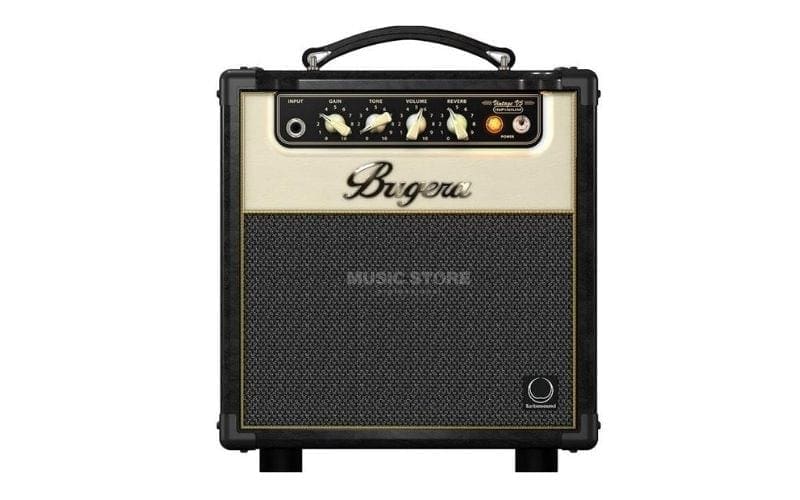
The Bugera V5 Infinium has three things over the Vox right off the bat. Firstly, it is cheaper. It is available now for £200, or second-hand for around £100. Secondly, it has an extra watt of power, coming in at 5 rather than 4. Thirdly, it has an inbuilt reverb. As with the Vox, it has the option to change power levels and some decent clean sounds. Again, you’re looking at an amp that just does one thing very well. However, by going with a less well-known name, you save yourself enough money to buy a decent guitar pedal too! This is definitely one of the best guitar amps for the money, and definitely one of the best guitar amps under £500.
Features
- Multiple power settings
- Adjustable reverb
- Valve sound at a reasonable price
Best Solid State Amps For Gigging and Recording
Now, onto Solid State amps for gigging and recording purposes!
Fender Frontman 212r OR the Fender Champion
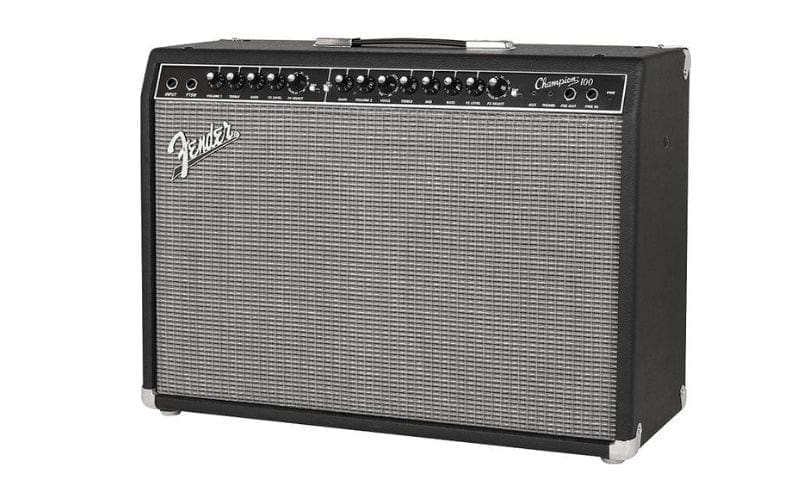

Oh look, it’s Fender again! This time, we are looking at a choice between two great amps, the Frontman 212r and the Champion 100. Both are capable of great clean sounds. Both amps hold their value well, going for around £200-250 used or second-hand. So, you may as well buy new here. Both amps have the capacity to be your main gigging amp for the rest of your life.
So, what’s the difference between them? The Frontman is basically the same amp as the Frontman 15r, but bigger. It has the same inbuilt reverb and built-in overdrive channels and that’s about it. If you are looking to get most of your live sound from your guitar pedals and want an amp that will stay out of your way, this is the chap for you.
If you are looking for something with some built-in effects, you may wish to look at the Champion. The Champion features delay, tremolo, flange and a nice combination of chorus, delay and reverb all in one. It also comes with a footswitch, so you can swap between clean and overdrive channels and turn your effects on and off. This means you could gig this without using a pedalboard at all if you like.
Features
- Both are great amps with solid inbuilt clean and overdrive tones
- The Frontman is incredibly simple to just plug in and play (and is available second-hand for around £50 less than the Champion)
- The Champion has a decent range of basic effects
- Both amps are loud enough for any gig and have tones worthy of a pro
Blackstar Silverline Special – Best Guitar Amps

The Blackstar Silverline Special is a different beast entirely. Modelling amps had a bad reputation at first, but recent advances mean that even Mark Knopfler has had his head turned by them! As technology has improved, the time for modelling amps has finally come.
Put simply, a modelling amp digitally recreates the tonal range of a ‘real’ amp. Often, they’re focused on modelling the sounds of classic valve amps. This gives the player the reliability and control of the solid state with the tone and response of the valve. The Blackstar Silverline does its job well, even going so far as emulating the classic ‘break up’ effect of valves when played at higher volumes.
This makes it one of the best modelling amps on the market right now. It comes with a decent range of effects and features Blackstar’s ISF control. This changes the overall sound profile to give you either a stereotypically American or British sound. A brand-new one will set you back around £400, but you can find them used for under £300 if you keep your eyes peeled!
Features
- 6 different amp and voice settings
- Four customisable presets
- Mp3 in socket
- 12 built-in and adjustable effects
- USB connection for direct MIDI recording
The Best Valve Amps For Gigging And Recording
Vox AC30


As mentioned earlier, Vox has been the standard that other amp builders have measured themselves by for about half a century. It is worth mentioning that If you see anything with VR or X in the title, then what you’re looking at isn’t a standalone ‘all-valve’ amp, but has a mixture of the valve and solid-state technology too. This keeps costs down whilst still giving you a Vox-worthy sound. If that’s what you’re looking for, then they are still great amps. However, they look so similar, it is easy to buy one by mistake thinking you’re getting a ‘classic’ Vox amp.
If you’re looking to get one, pure valve amp and have it do you for the rest of your life, then take a look at the AC30C2 and the AC30HW2. Both are stellar amps with the classic Vox sound. The HW2 is a fair bit more expensive, being available from around £1100 second-hand to the C2’s £700. The main reason for this difference is that HW stands for hand-wired, meaning a real human has worked on every inch of the circuitry, whereas the C2 has been machine assembled.
HW2 Pure Valve
The HW2 comes with the option to switch down to a 15-watt setting for getting more overdrive at lower volumes, whilst the C2 comes with options for Reverb and Tremolo. Both amps have a top boost channel, but the HW2 also gives the option to boost the gain further with the hot/cool switch. The HW2’s sound is arguably brighter and more articulated than the C2’s, but those who prefer darker tones in their music may lean towards the C2. There really is no right answer, so if you see either going at a price you’re willing to pay, your best bet is to snap it up immediately. I guarantee you’ll end up with a great-sounding amp and zero regrets.
Features
- All valve amps
- C2 comes at some affordable prices
- C2 has Reverb and Tremolo effects included
- HW is an exceptional quality high-end amp
- Both Sound amazing
- HW offers the option to cut to 15 watts
- Both amps have the classic Vox top boost channel, with an additional hot/cool switch on the HW
Fender Twin Reverb – Best Guitar Amps
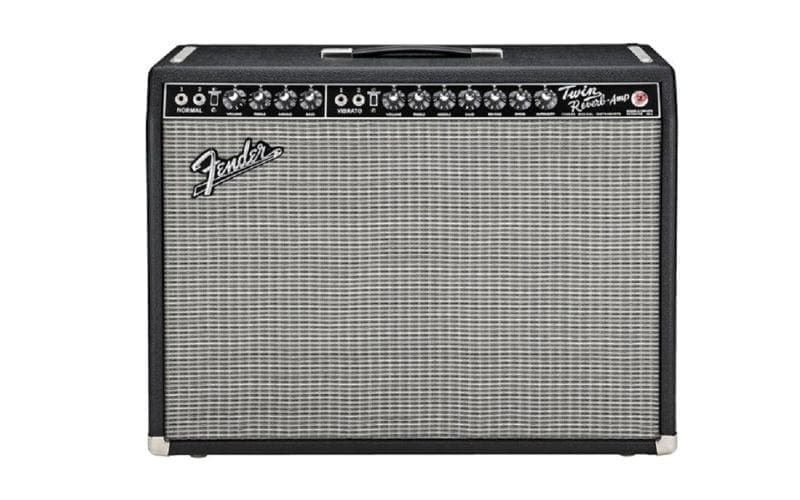
It has been several paragraphs since I mentioned Fender, so here we are again with the Fender Twin! These were a favourite of the likes of Mark Knopfler, Chuck Berry, Jimi Hendrix and Eric Clapton. Again, we are looking at a fairly bells-and-whistles-free amp. The real difference between the Fender and the Vox is that this has a more ‘American’ sound. This means that it has a more compressed, warm sound than British amps.
You also have to push it harder to get the valves to break up and distort. If you want a really clean sound or want to use pedals to generate your overdrive, this may be the amp for you. The twin is available with that gorgeous spring reverb and a vibrato/tremolo channel as well. One of the most revered models of the Twin Reverb is the 65, which you can get for around £1500 new. Alternatively, you can pick one up on eBay for around £600. In Valve terms, that is an absolute steal!
Features
- All valve amp
- Reverb and Tremolo effects
- Affordable!
- Sounds amazing
- So heavy that nobody will ever steal it…
Hayden Mofo 30

A final honourable mention goes to Hayden Mofo 30. Particularly popular with fringe and alternative bands like Biffy Clyro, We Are Scientists and Alpha Male Tea Party, Hayden are a more recently incorporated brand of amp maker. But what they lack in ‘prestige’, they make up for in style, quality and features. The Mofo 30 is known for being a pedal-lover’s dream. It has an effects loop and clarity that stops your playing from getting lost even when buried in effects. If you’re interested in manipulating your tone in new ways, this might be the one for you. The Mofo will let you cut the power all the way from 30 watts down to 2, so it actually functions well as both a home practice and a stage amp.
If you’re looking for a great all-around home and stage amp, this could be your unicorn. For those who were struggling to choose between the British Vox sound and the American Fender sound, this amp comes with two inputs specifically designed to sound like a UK or US amp. Essentially, it’s like buying one of each. These are only available as separate heads and cabs but can be found second-hand for the low price of £300 for both parts. That is the same as it costs to get just the head brand new! This is an incredibly great amp for the money and has a truly unique sound.
Features
- Separate head and cab
- All valve amp
- Very affordable on the second-hand market
- The 2-watt setting allows it to be driven at ‘neighbour-friendly’ volumes
- If you’re gigging it, friendly people will ask you questions about it
- Sounds unique (and amazing)
Orange Micro Terror
Equipped with a tube preamp and solid-state power amp, the Orange Micro Terror remains impressively compact while providing 20 watts of output. Despite its low wattage, it produces a substantial sound through a 4×12, although lacking a true ‘clean’ tone.
Significantly superior to entry-level amps from the past, it can be used for small gigs when mic’d up. The Micro has even replaced our regular amp during technical issues (as it fits easily in a pedalboard case) without the audience noticing.
Its portability allows for easy transport in a backpack or mounting on your pedalboard, making it ideal for frequent gigging guitarists. However, it is relatively quiet compared to the louder Tiny Terror. Regardless of this minor drawback, its affordability makes it hard to resist.
Positive Grid Spark Guitar Amp
The Positive Grid Spark has revolutionized the amplifier industry by combining the esteemed BIAS tone engine with cutting-edge smart technology, delivering impressive results. The device offers 30 amp models and 40 effects, along with Bluetooth connectivity for music streaming and ⅛” aux and headphone inputs. USB inputs and outputs allow the Spark to function as an audio interface for recording purposes.
Additionally, Spark is equipped with learning tools that enhance your skills while keeping it enjoyable. These features include ‘Auto Chords’—providing chord charts for any chosen song—and ‘Smart Jam’—creating authentic backing tracks tailored to your playing style.
Boss Katana 100 MkII
The Boss Katana 100 MKII is an ideal starter or backup amp for many guitarists, offering a variety of sounds to experiment with. Suitable for both beginners and experienced players, it features built-in effects and numerous connectivity options. This versatile amp provides excellent sound quality for practice sessions and small gigs alike.
Connecting the Katana modelling amp to a computer enables in-depth parameter editing, while its USB compatibility allows direct recording into digital audio workstations. The two channels facilitate quick access to preferred tones, and the extensive connectivity options ensure seamless integration with existing equipment.
Fender Hot Rod Blues Junior IV
For small club gigs, home use, or practice sessions, few amps are as versatile as Fender mini combos. The Jr IV stands out due to its Celestion type-A 12″ speaker, which offers a fuller and more balanced sound compared to most 10″ speakers.
This compact tube amp excels at one thing but does it exceptionally well. Its tendency to break up easily makes it an ideal studio tool for achieving early hard saturation. As expected from a Fender amp, the clean tones are immaculate; however, some might find it breaks up too soon for their preference.
The built-in spring reverb enhances your tone with a spacious quality and natural decay that is quite musical. Although seemingly simple at first glance, this amplifier offers significant depth and is not limited to pedal users only.
Do I need a tube, solid state or digital amp?
First, consider if the amp is tube, solid-state, or a digital amp modeller. Tube amps offer genuine electrical artistry through glowing glass tubes, providing rich harmonic warmth and dynamism that remains popular despite advances in digital and modelling technology. When used at stage volume, tubes outshine digital and modelling amps.
Modelling amps excel in variety and instant gratification. They can accurately recreate hundreds of models across genres, offering a near-infinite tonal palette. Modelling amps also allow for cabinet and speaker customization along with built-in effects—ideal for cover band players or beginners seeking their signature sound.
The distinction between solid-state and modelling amps has become less clear recently; however, solid-state amps generally don’t emulate various sounds like their digital counterparts. While sometimes criticized by tonal purists, class D power amps are compact and efficient with clean tones that work well with pedalboards. However, few solid-state overdriven or distorted tones can compete with high-end modellers or tube amps.
Combo or head
Combo amps integrate the pre-amp, power amp, and speakers into one unit, while heads necessitate external speakers. Heads offer the advantage of connecting more speakers if needed, but in a time when venues face noise complaints and local bars have adequate PA systems, extra volume is less crucial. Using a head without your own cabinet on tour leaves you reliant on the venue’s potentially subpar cabs.
Combo amps are ideal for maintaining your unique sound during performances. You can be confident that your sound will be delivered to the front of the house as intended. However, this convenience comes at a price; combo amps are usually quite heavy, making them difficult to transport up narrow venue stairs and possibly leading you to desire a more portable ‘lunchbox’ head.
Is guitar amp wattage important?
Indeed, it is. Generally, higher wattage implies greater volume. However, there’s some complexity to this. Tube amps sound louder than their solid-state or modelling counterparts due to certain electrical intricacies not discussed here. In simpler terms, a 10-15 watt tube amp equates to a 50-watt digital counterpart. So consider this before purchasing that 100-watt tube head and 4×12 combo you’re interested in.
How much gain does my guitar amp need?
In conclusion, consider your gain needs. As a pedalboard user, you might have multiple overdrive and distortion pedals and only require an amplifier for a clean foundation to enhance those sounds. However, for players with heavier preferences, a high-gain amp offering a fuller, more dimensional character is often irreplaceable. Remember to take into account the number of channels an amp has if you plan to switch between clean and distorted tones seamlessly.
Best Headphones For Guitar Amp
The best headphones for guitar amps are closed-back, over-ear headphones. Closed-back headphones provide better sound isolation, which is important when playing an electric guitar through an amp. Over-ear headphones provide better sound quality and comfort as well. Look for headphones with a wide frequency range, good sound isolation, and comfortable ear cups. A good pair of headphones will allow you to hear your guitar clearly and accurately, without any external noise interference.
Final Thoughts

So, consider your options for good amps firmly narrowed down!
Hopefully, you have a better idea of what amps you are interested in for home practice and for gigging/recording. As you can see, some amps hold their value well and are best bought new. However, sometimes you can get great deals on second-hand guitar amps if you look carefully!
A final word of warning, when watching Youtube reviews of guitar amps, remember that what you are hearing is the quality of someone else’s playing, the tone of someone else’s guitar, the technique they used to mic the cab and the quality of your own speakers or headphones. All of these elements colour the tone you hear. The best way to get the right guitar amp for you is to use this guide to list out the features you need. Narrow your list down to two or three choices, and then try them with your own guitar! If you have a favourite amp we haven’t mentioned here (and I’m sure many of you do!), why not tell us about it in the comments?







